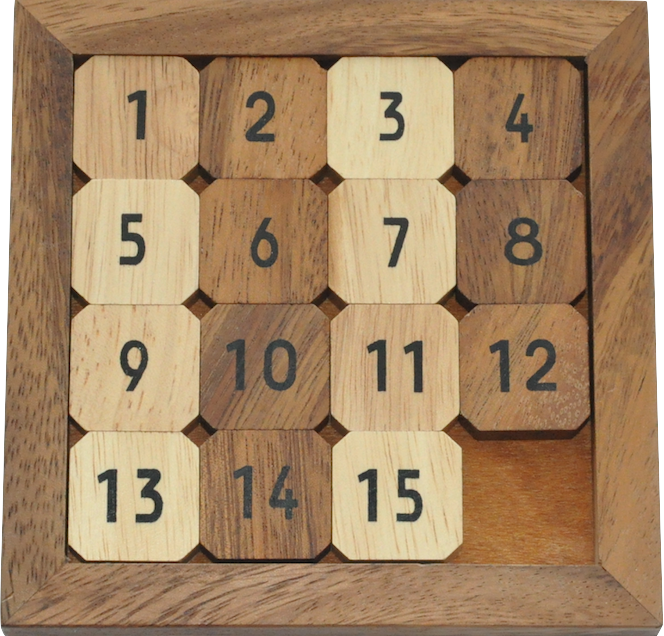
15-puzzle ($n^2-1$ puzzle)
$n^2-1$ numbered tiles can be slid in a $n \times n$ board with the goal of arranging them in increasing order.
Description
$n^2-1$ of the $n^2$ positions a $n \times n$ matrix are filled by tiles, leaving one unfilled hole. A move consists of sliding a tile that is adjacent to the hole into the hole (effectively swapping them). The goal is to rearrange the tiles into a particular permutation.
Typically tiles are numbered with the integers from $1$ to $n^2-1$ and the goal is to arrange them in increasing order (left to right, top to bottom) with the hole being on the bottom right corner.
Computational complexity
Determining whether a solution exists is in P [1] [2].
Finding the shortest solution is NP-hard [3] [4] and in APX [5].
References
[1] A. F. Archer, “A Modern Treatment of the 15 Puzzle”, The American Mathematical Monthly, 2000.
[2] D. Kornhauser, G. Miller, P. Spirakis, “Coordinating Pebble Motion On Graphs, The Diameter Of Permutation Groups, And Applications”, in FOCS 1984.
[3] O. Goldreich, “Finding the Shortest Move-Sequence in the Graph-Generalized 15-Puzzle Is NP-Hard”, Studies in Complexity and Cryptography, 2011.
[4] E. D. Demaine, M. Rudoy, “A simple proof that the ($n^2$ − 1)-puzzle is hard”, Theoretical Computer Science, 2018.
[5] D. Ratner, M. Warrnuth, “Finding a Shortest Solution for the n x n extension of the 15-Puzzle is Intractable”, in AAAI 1986.
@misc{cog:15-puzzle,
author = "{CoG contributors}",
title = "{15-puzzle ($n^2-1$ puzzle) --- Complexity of Games}",
year = "2024",
url = "https://www.isnphard.com/i/15-puzzle/",
note = "[Online; accessed 2024-05-28]"
}
